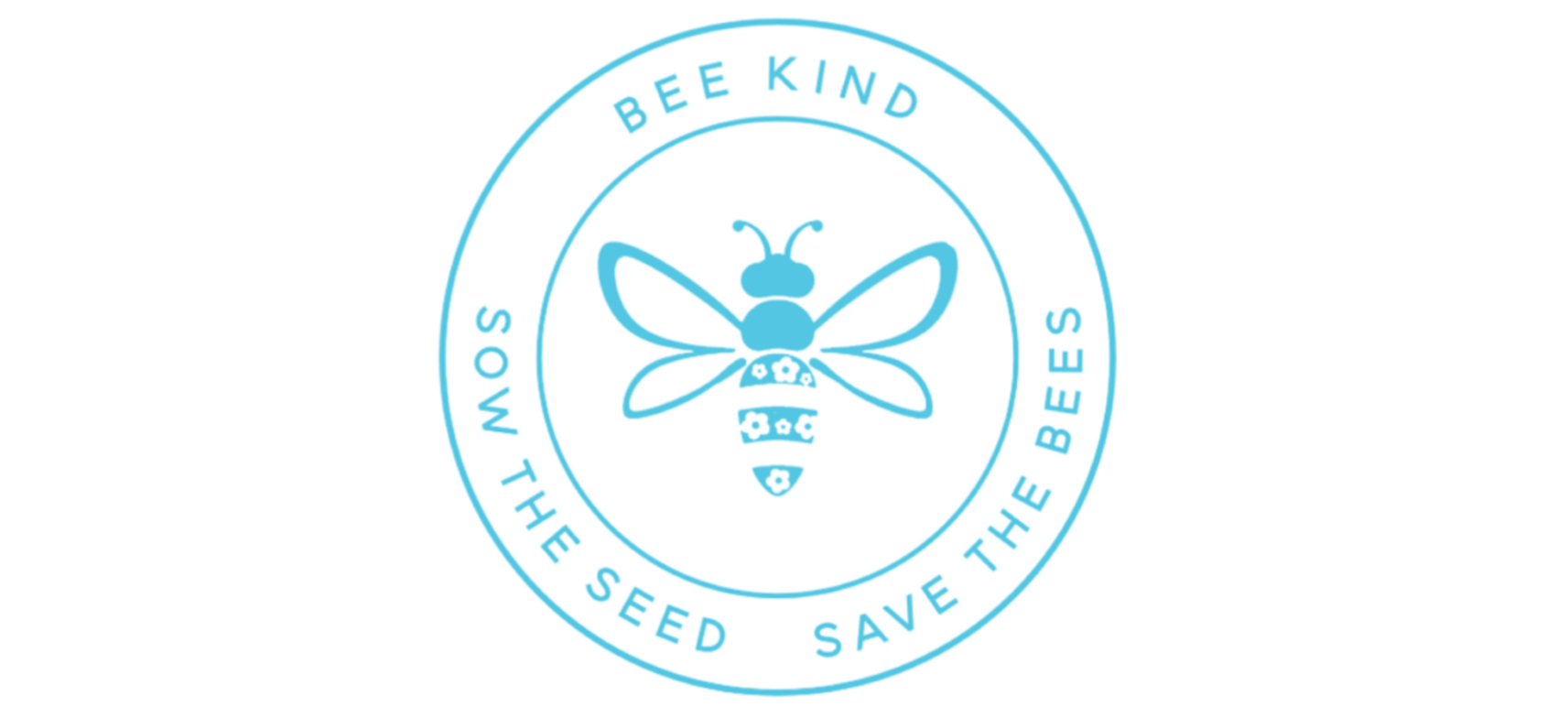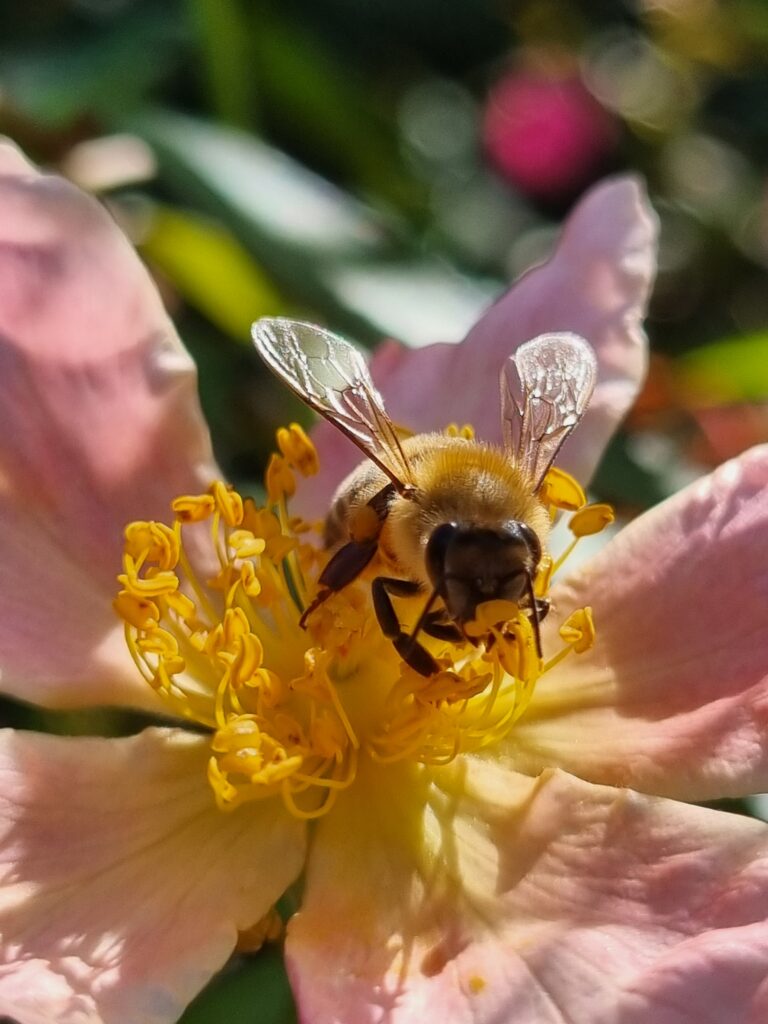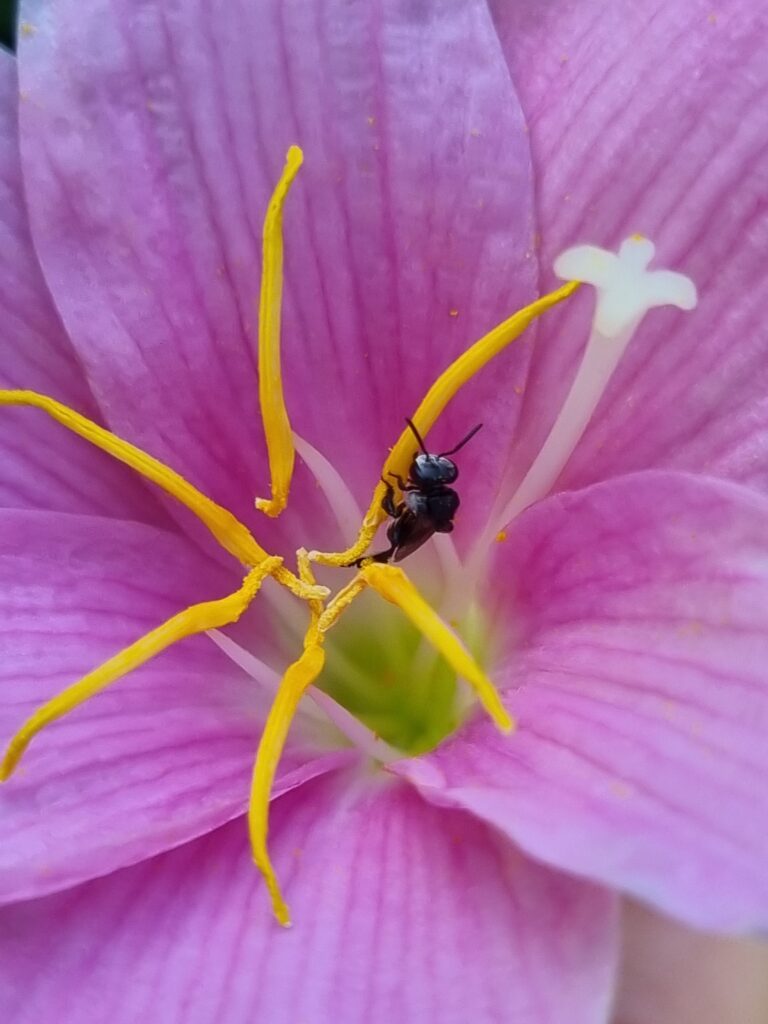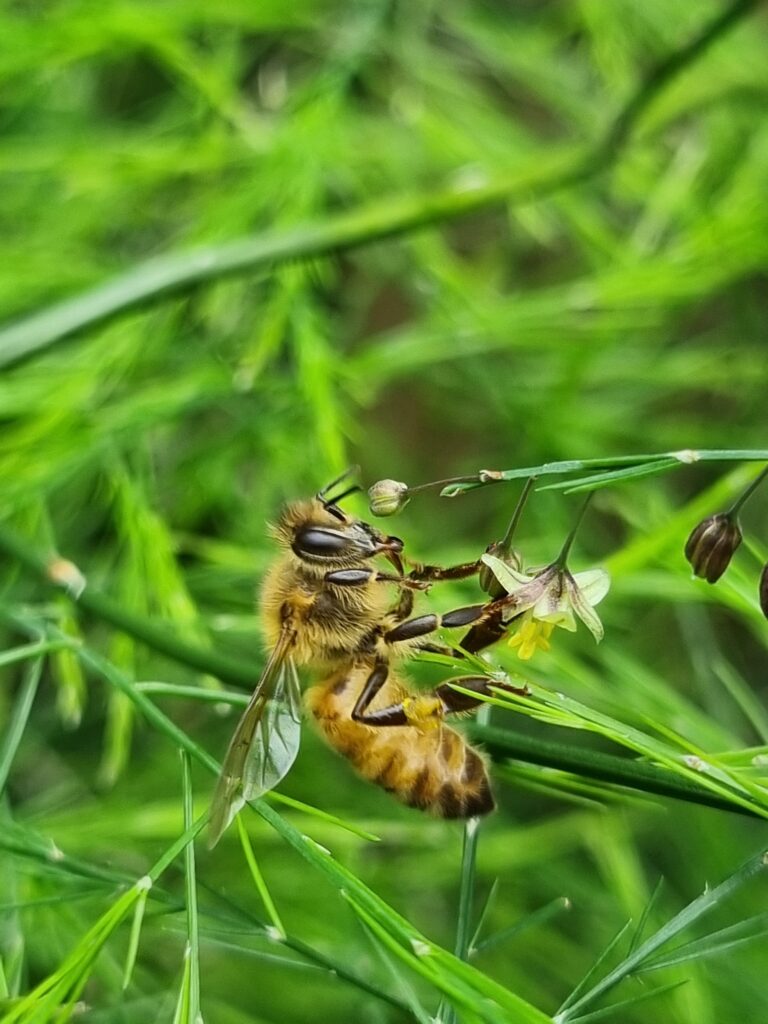Why do we need bees? Bees are incredibly important members of our ecosystem! Without them, the world would be a very different place. Bees contribute to pollination, provide life improving resources in the medical field, they create honey and beeswax and largely contribute to the economy.
Pollination
Most importantly bees pollinate plants! What is pollination? Simply put, the transfer of pollen from the male part of a flower to the female part. Pollination is vital for many plants to seed or produce fruit. In fact, 87% of the leading food crops worldwide depend on pollinators.
Bees are particularly good pollinators! Throughout the day, bees visit hundreds of flowers to collect pollen, to feed their young. As they do so, they leave small amounts of pollen behind, this pollinates the flower. In some self-pollinating plants bees help produce better quality seeds and fruits as their exchange of pollen prevents inbreeding.
About 6% of flowers require buzz pollination to fertilise them. What is buzz pollination? It is a type of pollination in which bees use vibrations to remove and collect pollen from flowers with anthers that open through small pores or slits. More than half of all bee species can buzz pollinate and they are essential for the survival of these plants.
Medicine
How do bees contribute to medicine? Honeybees produce several products including propolis (used to build and repair the nest), bee venom, honey, and bees wax, all which are used in medicinal products.
The flavonoids found in propolis have been shown to be more effective than antibiotics at inhibiting the growth of certain bacteria, including those which cause typhoid fever.
Bee venom is given as a shot for rheumatoid arthritis, nerve pain (neuralgia), multiple sclerosis, swollen tendons (tendonitis), and muscle conditions such as fibro myositis and enthesitis. The naturally occurring, antiseptic compound called melittin, found in bee venom, has been used successfully in studies such as an anticancer agent, treating antibiotic resistant strains of bacteria and the treatment of HIV/AIDS.
Some species of bees produce enough honey to be harvested. Besides being delicious and sweet, researchers have claimed that it has antioxidant, antimicrobial, anti-inflammatory, and anticancer properties.
In traditional medicine, people use honey when treating a wide variety of conditions such as;
- eye diseases
- bronchial asthma
- throat infections
- tuberculosis
- thirst
- hiccups
- fatigue
- dizziness
- hepatitis
- constipation
- worm infestation
- ulcers
- hemorrhoids
- eczema
- wounds
Beeswax as a structural product, that is also naturally antibacterial, is used as a bone wax in surgery to prevent bleeding from bone surfaces. Additionally, the pharmaceutical industries use it in ointments.
Honey
As the second most preferred sweetener behind granulated sugar, you can only imagine how much honey is consumed worldwide. In fact, global consumption of honey reached 1.8 million tonnes in 2015.
Beeswax
In addition to its medical use beeswax has a wide range of applications such as waterproofing, fuel and as a thickening agent in cosmetics.
Economy
The global market value of honey last year (2021) was approximately $11.8 billion AUD! That being said, the global economic contribution of bees each year is estimated to be as much as $833 billion AUD.
In short, without bees, we would have very limited food sources and many plant species would die out, sadly many animals and people would be left without food and starve. We wouldn’t have delicious honey and other products that these hardworking bees provide us, not to mention the economic impact would be substantial. We need to be greatful for these precious little guys and do our best to help save them.
Thank you for reading! If you would like to purchase bee friendly seeds use the coupon code THANKS4READING for a discount.
Sources:
Vallejo-Marín, M, Buzz pollination: studying bee vibrations on flowers, New Phytologist, Volume 224, Issue 3, 26 December 2018.
https://urbanbeelab.org/more-than-just-pollinators-honey-bees-in-medicine/
https://www.buzzaboutbees.net/which-bees-buzz-pollinate.html
https://www.environment.sa.gov.au/goodliving/posts/2016/10/bees
https://www.medicalnewstoday.com/articles/why-are-bees-important-to-humans
https://www.soocial.com/honey-consumption-statistics/
https://www.statista.com/topics/5090/honey-market-worldwide/#topicHeader__wrapper






